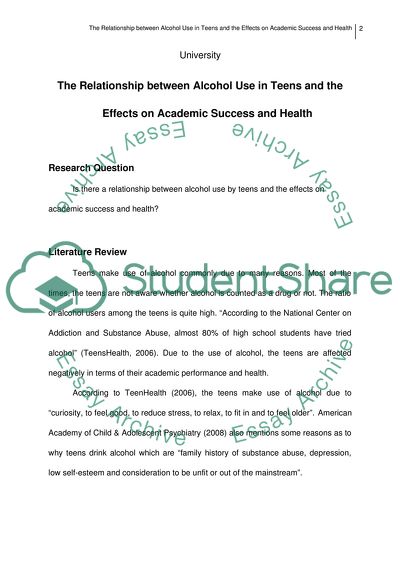Cite this document
(Alcohol Use in Teens Research Proposal Example | Topics and Well Written Essays - 2000 words, n.d.)
Alcohol Use in Teens Research Proposal Example | Topics and Well Written Essays - 2000 words. Retrieved from https://studentshare.org/social-science/1721160-the-relationship-between-alchohol-use-in-teens-and-the-effects-on-academic-success-and-health
Alcohol Use in Teens Research Proposal Example | Topics and Well Written Essays - 2000 words. Retrieved from https://studentshare.org/social-science/1721160-the-relationship-between-alchohol-use-in-teens-and-the-effects-on-academic-success-and-health
(Alcohol Use in Teens Research Proposal Example | Topics and Well Written Essays - 2000 Words)
Alcohol Use in Teens Research Proposal Example | Topics and Well Written Essays - 2000 Words. https://studentshare.org/social-science/1721160-the-relationship-between-alchohol-use-in-teens-and-the-effects-on-academic-success-and-health.
Alcohol Use in Teens Research Proposal Example | Topics and Well Written Essays - 2000 Words. https://studentshare.org/social-science/1721160-the-relationship-between-alchohol-use-in-teens-and-the-effects-on-academic-success-and-health.
“Alcohol Use in Teens Research Proposal Example | Topics and Well Written Essays - 2000 Words”. https://studentshare.org/social-science/1721160-the-relationship-between-alchohol-use-in-teens-and-the-effects-on-academic-success-and-health.


